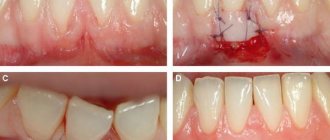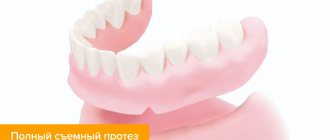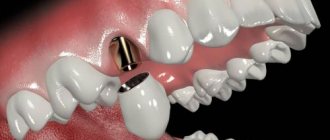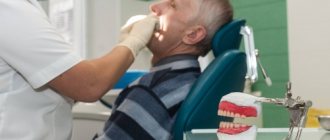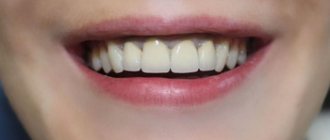In what cases may the bone fail to take root?
The bone may not take root in cases where it becomes infected, including when the patient violated the schedule for taking antibiotics or did not follow the doctor’s orders.
Much attention is paid to food intake: the patient can simply, out of forgetfulness, bite into something hard, and his stitches will come apart, and the material and bone graft will become infected through the open wound.
The above accounts for 90 percent of cases
when the bone may not take root.
Are there any contraindications to bone grafting?
Of course, there are contraindications to bone grafting. These include
:
- various chronic diseases, incl. diabetes mellitus with high sugar levels,
- the period when the patient takes a number of drugs, including chemotherapy,
- in the period after chemotherapy, when the bone cannot be “touched” at all.
Features of hygiene after bone grafting
After bone grafting it is recommended
:
- use of special surgical toothbrushes,
- the use of toothpaste should be limited, and even better, use special toothpastes for post-surgical interventions,
The main thing when carrying out hygiene is NOT TO INJURY
area of bone grafting! You should try to eliminate contact with this area or reduce it to a minimum.
When can you do without bone grafting?
You can always do without bone grafting when you can install an implant of the required diameter and required length into the remaining bone.
And, in fact, you shouldn’t do bone grafting just to assert yourself. Some doctors suffer from this, trying to prove to themselves or someone else how they can do bone grafting.
But, as they say, the best bone grafting is the one we don’t do: if the patient can be rehabilitated without bone grafting, then it’s better to do just that. Since volume can be added with soft tissues, connective tissue can be transplanted - a graft, or drugs can be added to replace the volume of soft tissues - and achieve an excellent result!
What implants are used after bone grafting?
Are there “special implants” that are recommended in cases of bone grafting? Both with bone grafting and without bone grafting, it is necessary to use implants only from good, proven manufacturers, those that have a good clinical base. For example – Straumann, Nobel, Ankylos, Xive, Astra Tech.
There are a number of other implant systems that give good results. But at the German Implant Center we use only the best implant systems, only premium ones.
How is implantation performed during bone grafting?
Implantation during bone grafting can be carried out either simultaneously with bone grafting, or delayed - when the implants are installed in the new “grown” bone.
As an experienced implant surgeon, in my practice, in 80-90 percent of cases I perform bone grafting at the same time
with implantation.
I will explain why I perform plastic surgery with implantation at the same time, and what is the advantage of this approach. Bone grafting itself requires a long healing period, from 4 to 9 months. And if we maintain this period and then do implantation, then we have to wait another 4 months. That is, the time frame in this case increases significantly.
And if I do implantation along with bone grafting, then the implant takes root along with the bone. A good implant has an excellent osteogenerating surface, and when fused, an excellent result
.
This reduces the patient’s rehabilitation time. And most importantly, the patient DOES NOT NEED
second surgery. We understand that a large number of surgical interventions do not improve trophism, mucous membranes, or bone tissue.
Everything we do at the German Implant Center, from tooth extraction to implantation, is carried out as atraumatically as possible for the patient.
How many implants are placed during a total restoration?
We specialize very broadly in total implant rehabilitation. In the upper jaw, 6-8 implants are recommended according to our protocol; in the lower jaw, 6 implants are sufficient for total rehabilitation.
Often, implantation occurs simultaneously with the installation of temporary teeth, that is, the patient leaves the clinic “with teeth”, and not on the second or third day, but on the same day when implantation is done:
Preliminary implantation planning is carried out using CBCT, the implants are placed in the required positions.
After this, a surgical template is made, according to which the implants are installed. And based on the same computed tomography (CBCT) and images, a temporary structure is made that will be attached to the implants installed for the patient.
And it turns out the so-called “full case” is when the patient comes, if necessary, if circumstances require it, teeth are removed (or they have already been removed/lost earlier), implants are placed on the patient and an orthopedic structure is fixed - his new teeth.
Varieties
Many types of endoprostheses are used in plastic surgery. This variety allows you to choose the best option for any occasion and get excellent results.
The main classification parameter is the implant material. The survival rate and installation method depend on it.
What breast implants can be placed:
- Hydrogel (bio) – filled with carboxymethylcellulose, a natural polymer that is fully compatible with natural fabrics. When the shell ruptures, the material simply breaks down into glucose, carbon dioxide and water, and is eliminated from the body naturally. A completely safe filler, holds its shape perfectly and does not provoke inflammatory processes, looks natural and attractive.
- Silicone is a classic in endoprosthetics, consisting of an outer shell and an internal filler based on silicone gel. The best products are those with soft touch filler - this is a dense gel that optimally imitates the natural appearance and structure, and restores its shape when compressed. Silicone endoprostheses with standard cohesive gel are also popular for breast enlargement - their advantage is that if the shell is damaged, the jelly-like gel is completely absorbed and does not provoke complications. And another type of silicone is highly responsive - it is very dense, holds its shape excellently, and does not leak, but models based on it give the breasts an unnatural appearance and are too hard to the touch.
- Saline - pioneers of plastic surgery, the very first endoprostheses. Structurally, they consist of a silicone shell and saline filling. First, the shell is placed, and then it is filled with sodium chloride solution. Although it is also possible to install an already filled implant. Such models can be placed with minimal tissue incision, which reduces the trauma of the operation and improves the aesthetic effect due to the absence of scars. The solution itself is absolutely safe for the body. However, if the membrane ruptures, it will be necessary to undergo repeated breast surgery.
- Silica gel - filled with microscopic silicate balls. A distinctive feature is low weight. Silica gel products are very light, therefore they are suitable for large-sized prostheses; they do not weigh down the chest, do not overload the spine and prevent the development of ptosis.
Preference should be given to silicone models. They combine naturalness, elasticity, complete biocompatibility, safety, a wide selection of shapes and sizes, and, in addition, a reasonable price. Whereas bio implants are expensive, and silicate prostheses have not yet become widespread and cannot offer a wide range.
The surface of the implant can be smooth or porous. The latter is preferable, since it does not cause lumps in the breast and other complications, and does not provoke deformation of the endoprosthesis itself. In addition, a textured surface, as is the case with Motiva implants, provides a more secure fit and ensures that the implant does not move or tip over when moving.
How to enlarge breasts: with round and teardrop-shaped implants?
With all the variety of modern implants, they have only two shapes: round and teardrop-shaped, also ergonomic or anatomical.
Round
A universal option for augmentation, correction and mastopexy. Implants are widely used for asymmetry and mastoptosis. They perfectly imitate the natural shape, are easy to install and are affordable.
*Photos before and 2 years after hybrid breast augmentation (enlargement + lipofilling) with Motiva 265 ml round implants
teardrop-shaped
Such implants are noticeably more expensive, but this can be compensated by their advantages. They favorably follow the natural contours and shape of the mammary glands. Ideal for enlarging very small breasts. They are distinguished by high density and hold their shape well. Requires a more complex installation operation.
After inserting anatomical implants, it is advisable to abandon push-up bras and shapewear, as they can deform the prostheses.
On which jaw does tooth bone resorption occur faster?
How quickly does a deficiency of bone and bone tissue occur in the absence of a tooth?
In fact, tooth bone tissue decreases faster in the upper jaw, since the upper jaw is softer and more porous. In the lower jaw, the bone also disappears quite quickly, since the vestibular plate near the teeth is quite thin. Six months after tooth loss, quite severe atrophy of bone tissue occurs, and the atrophy progresses. And therefore, in order to avoid atrophy, it is advisable to do implantation simultaneously immediately after tooth extraction.
This format is the regular, daily work of the specialists of the German Implantology Center. For example, a patient comes with a crack in the root of a tooth - the tooth must be removed. We can go with two options:
Option 1.
We can remove the tooth and 3 months later implant the tooth into the patient.
But during these three months, shrinkage of the bone tissue still occurs, since - I said earlier - the vestibular bone plate is very thin. And in this case, the patient undergoes 2 surgical interventions
: the first is tooth extraction, the second surgical intervention is the installation of a dental implant.
Option 2.
In our practice, we recommend and practice the second option. This is a one-step implantation, when the patient has a tooth removed, an implant is installed, and in order to avoid collapse of the bone tissue in the places where the roots of the tooth used to be, these places are filled with a bone graft. Due to graft filling, we do not have tissue “collapse”; the contour of both the gums and the jaw bone tissue is preserved. Which, in turn, is very difficult to achieve with delayed, delayed implantation.
Who can undergo bone grafting?
Who are potential patients for bone grafting, and what are the age restrictions for it?
This is a bit of a tricky question :). The oldest patient I have performed bone grafting on is a 75-year-old patient, a wonderful, purposeful woman. She had bilateral terminal defects on her lower jaw. She really wanted implantation and refused a removable structure.
I performed bone grafting on this woman at the same time as implantation. And literally 6 months later she was fitted with prosthetics. And everything went great.
In the case of the patient’s age, the main thing is that he has no contraindications. Perhaps there are age restrictions, but they are not so pronounced, because, although trophism deteriorates with age, regenerative abilities decrease, but the main thing is the presence of contraindications. You need to look at the tests, and if the patient is healthy at 75 years old, then why not?
Stages
1. Preparatory
The examination shows whether additional manipulations are needed, such as curettage or cleaning teeth from plaque.
2. Pain relief
The operation is performed under local anesthesia
3. Formation of flap, tissue extension
The epithelial tissue is capable of regeneration, and the patient's palate will not be damaged after the tissue is taken for transplantation.
4. Stitches and disinfection
The stitches are removed after 10-14 days.
Some clinics use a laser device instead of a scalpel. This reduces trauma and shortens the healing period, but increases the price of gum surgery after dental implantation.
How to do without bone grafting
Is it possible to do without bone grafting and sinus lift?
Yes, in some cases you can do without bone grafting. But you need to understand that if the patient does not have bone tissue, and we install an implant, the crown will hang over the gum, and something from food will constantly get clogged there. That is, it is aesthetically unsightly, and all the food will be stuffed there, the patient will always have a “pocket of food supplies” from yesterday and the day before yesterday.
Option with a smaller diameter implant
You can place an implant of a smaller diameter, and at the same time we can carry out soft tissue regeneration - replant the mucous membrane (this can be connective tissue from the palate, from the tubercle of the upper jaw). And thus we achieve replenishment of the volume of soft tissues. Due to this, aesthetics are visually improved and hygiene problems are eliminated.
Whenever it is possible to avoid various surgical procedures, but not at the expense of quality, then they should be avoided.
That is, surgery for the sake of surgery - it is not needed
.
Prevention of complications
- do not eat for 5-10 hours after surgery;
- do not drink for at least 2 hours;
- wear a mouthguard if your doctor recommends it;
- use an irrigator in the first 2 days instead of brushing;
- rinse your mouth after eating;
- exclude hot, spicy, salty foods;
- postpone or reduce physical activity in the first week.
If the swelling does not subside within several days, there is pain, the temperature rises, and bleeding appears, you should immediately seek help. If the recommendations are followed, problems rarely arise.
To avoid complications, it is better to perform soft tissue plastic surgery before and after implantation in a highly reputable clinic.
Article Expert
Argunova (Sivova) Tatyana Anatolyevna Dentist-therapist, doctor of the highest category
Work experience: more than 6 years
